Sittannavasal Monuments
by Subramanian Swaminathan
e-mail: sswami99@gmail.com
February 2008
Ezhadippattam

There are a number of natural caverns
with polished stone- beds in this hillock where Jain ascetics performed
austerities.
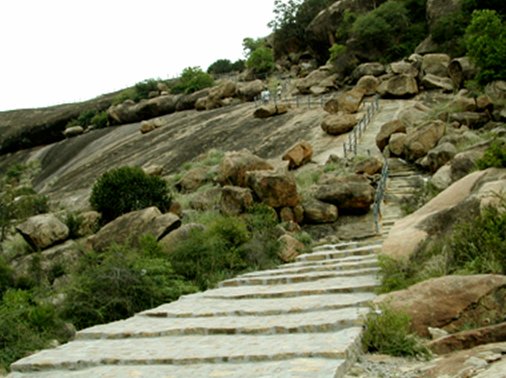
a few hundred meters south of the cave-temple
is the beginning of the path that leads to Ezhadippattam
The Ezhadippattam is the name given
to a natural cavern where over more than a thousand years since 1st century
BC, Jaina ascetics practiced severest penance such as kayotsarga
(meditation till salvation in standing posture) and sallekhana (fasting
unto death).
There are innumerable inscriptions
here. But all these inscriptions are barely visible now, due to vandalism
within the last 50-60 years.
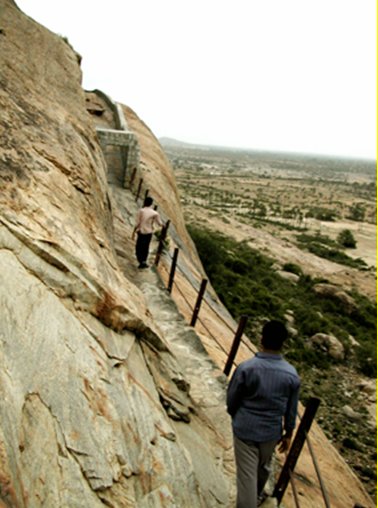
Entry to the Cavern
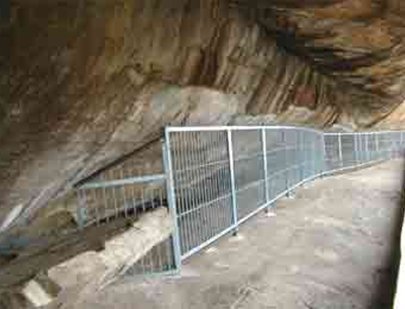
The Cavern
The cavern is near the top of the centre
of the hill and on its eastern side. But the only approach is from the
west, over the top of the hill. It is said that, originally this path to
the cavern, along a narrow ledge in which precarious footholds are cut
in the rock, was difficult and dangerous. Proper steps have now been cut,
and an iron railing provided.
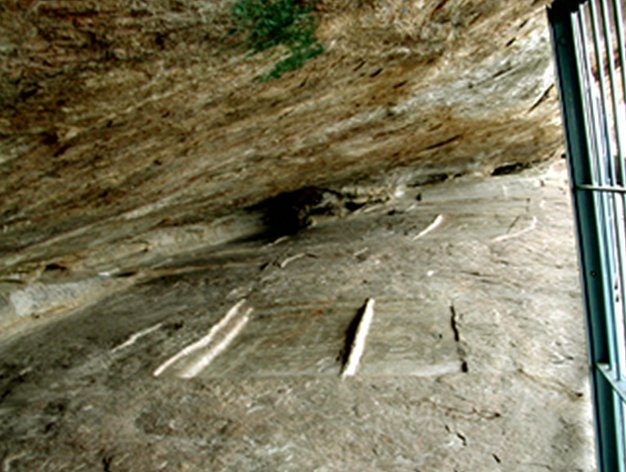
The stone-bed
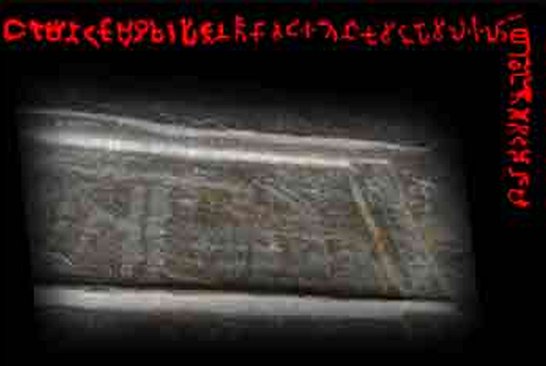
Tamil Brahmi script of the 1st
century BC

Inscriptions
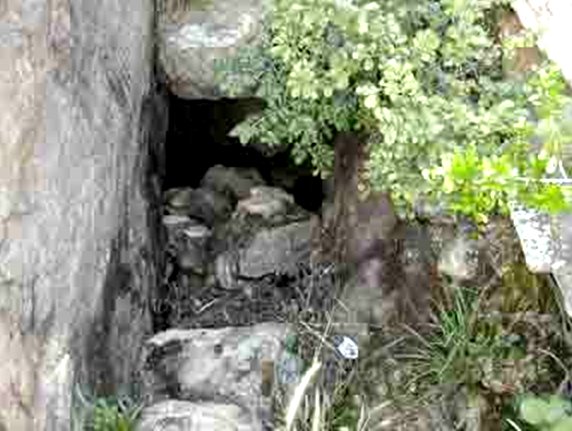
There is also a passage to reach the hill
through
a very narrow cavern, now under disuse
stone beds & inscriptions nearby
Presently the ASI had installed an iron
barricade at the mouth of the cavern to stop vandalism. The cavern
is roomy but low. The floor is marked out into spaces for seventeen beds,
each with a sort of stone pillow. They are highly polished. Similar arrangements
can be found in other parts of India like Lomas Rishi cave of Gaya, Khandagiri-
Udayagiri caves of Bhuvanesvar and many places in Tamilnadu like Anamalai,
Alagarmalai, Tiruvallam, etc. In Pudukkottai itself, similar beds are there
in Aluruttimalai of Narttamalai hills and Kudumiyamalai.
Most of the beds here are inscribed.
One of them, the largest, is perhaps the oldest since it contains an inscription
in Tamil in the Tamil Brahmi script of the 1st century BC. This is one
of the oldest lithic records of South India.
The inscription reads as follows:
eriminatu kumizh-ur piranta kavuti-i
tenku- cirupocil ilayar
ceyta atit-anam.
It mentions that one Ilaiyar
of Tenku-chiru-posil made this seat for Kavuti born at Kumuzhur
in Erumi-naadu. It is believed that the Kumuzhur in Erumi-naadu
refers to a place in the present Vellore district. By the other beds,
names of other Jaina ascetics practiced sallekhana are inscribed.
Thus, there are number inscriptions of 7th to 10th centuries AD. These
inscriptions show that for about 1000 years from the 1st century BC this
cavern was a resort of Jaina ascetics.
|

